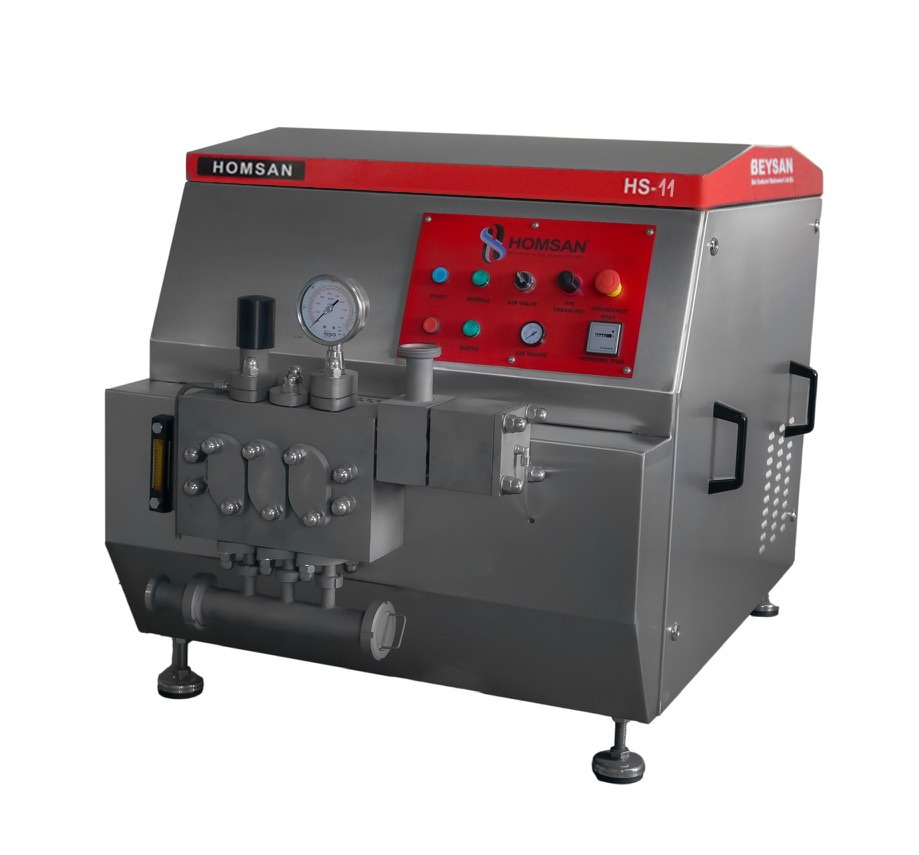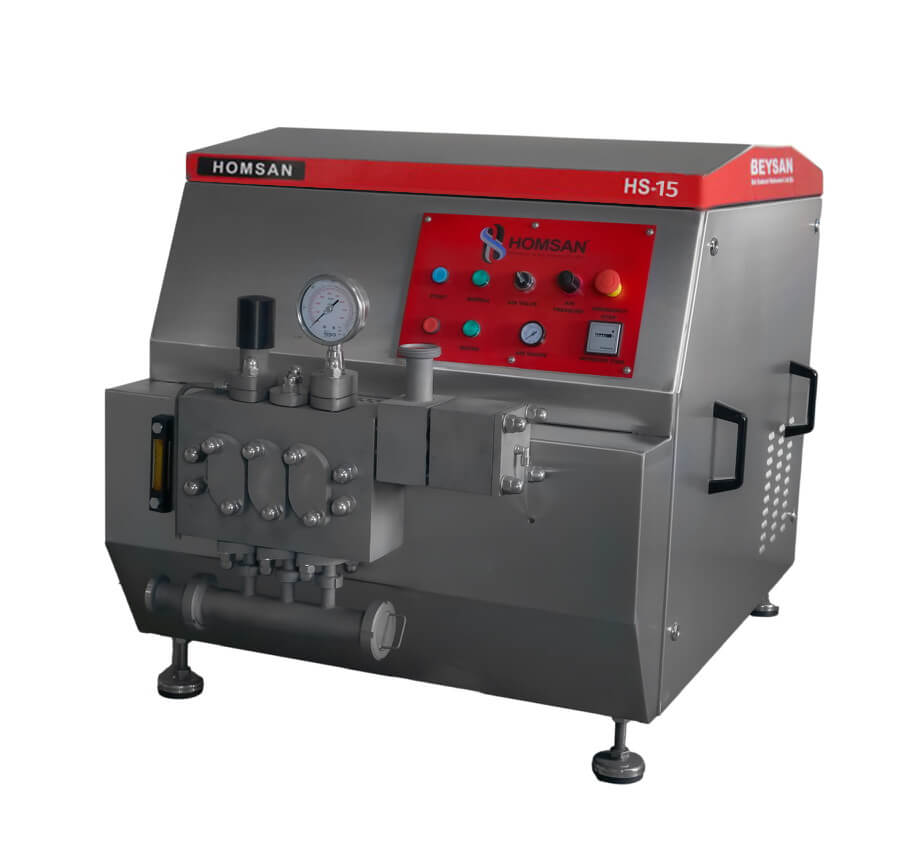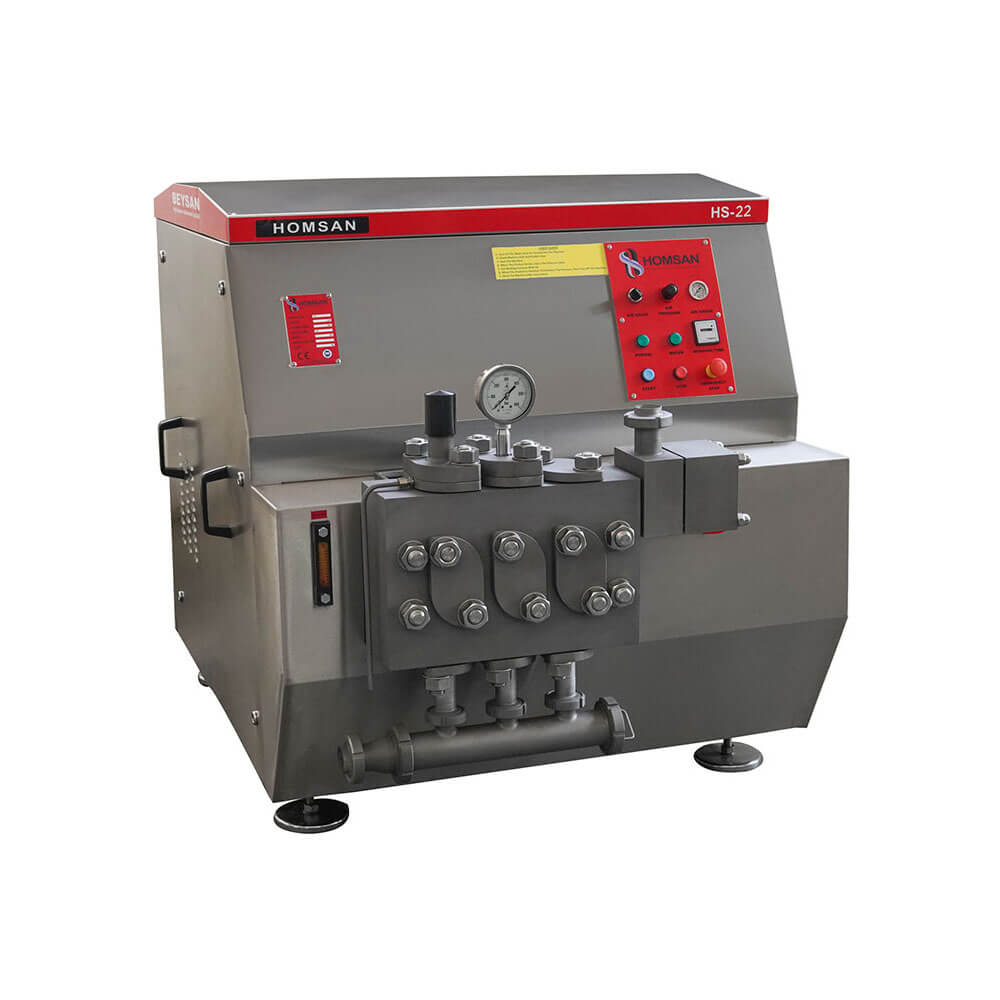
What is Homogenization?
Homogenization is the mechanical process carried out to make the fat more stable by breaking the fat globules emulsified in milk into smaller pieces. The sector in which the homogenization process is most widely used is the milk and dairy products sector. High pressure homogenizers are used to homogenize the milk.
With the effect of high pressure, milk is forced to pass through a narrow gap in a short time.
Thus, the fat particles get smaller with the pressure on the milk.

How to Homogenize the Milk?
The homogenization process is carried out by applying high pressure to the liquid. The most common application of the homogenization process is milk and dairy products. In the homogenization process of the milk, the fat globules in the milk are crushed (?) with high pressure. The main purpose of the homogenization process in milk technology; It is to slow down the fat particles, which tend to collect on the surface, by reducing their average 3-4 μm diameter to 1 μm.
Thus, the fat in the milk is separated from the milk and the formation of cream is prevented. All milk sold in packages today is subjected to this process.
Pressure, Temperature and Homogenizer head design are the factors affecting the homogenization process.
Homogenization Pressure
By increasing the pressure applied to the milk, the fat particles become smaller, but increasing the pressure alone does not mean a faster homogenization process. The pressure range generally used in the homogenization of milk is in the range of 100-250 bar.
Pressure values applied for drinking milk vary between 100 bar and 250 bar depending on whether the milk is Pasteurized or UHT sterilized. The temperature of applying pressure to the milk is 65 ºC.
Homogenization Temperature
Another important factor in the homogenization process is temperature. The temperature of the milk passing through the homogenizer is important because the fat particles that need to be crashed, in the milk react to the temperature. The optimum temperature range recommended for homogenized milk varies between 60 – 75 ºC. It is undesirable for the temperature to be applied to be below 45 ºC because the free circulation of fat particles decreases as the temperature decreases. During the homogenization process, the temperature of the milk increases slightly due to mechanical friction. It is possible to calculate this increase. The sum of the first inlet temperature of the milk and the amount of temperature increase due to friction gives the actual temperature of the milk. In order to obtain the desired homogenization temperature value, it is necessary to adjust the first inlet temperature of the milk according to this value.
Homogenizer Head Design
Homojenizasyon kafası tasarımı işlem sonucu üzerinde oldukça etkilidir. The homogenizer head, which has high cavitation values at low pressure, provides more effective results.
Benefits of Homogenization Process to Milk
- Increases the viscosity of milk, thus increasing the quality of milk.
- Since the total surface area of the oil particles increases, homogeneous distribution of the particles is ensured and thus the accumulation of oil on the surface is prevented. In this way, the formation of a cream layer is prevented.
- Since the fat particles in the milk are divided into smaller pieces, the surface area expands and makes the milk more delicious.
- After homogenization, milk gives a whiter appearance as it reflects light better.
- Milk is digested more easily.



